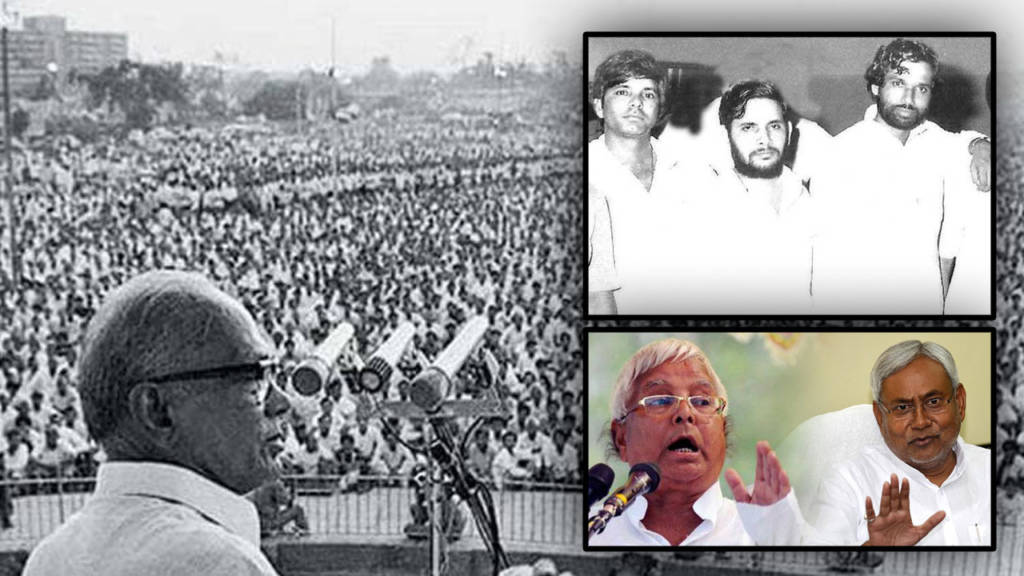The people of Bihar are known for having political acumen, and the political maturity of Bihari voters is a much-debated trend in the national and international media. The state elections are around the corner and it is the right time to objectively analyze the impact of ‘anti-establishment’ politics in Bihar.
Bihar went with the very first anti-Congress wave in the electoral politics of the country in 1967, when the state got its first non-Congress government. Between 1967 and 1971, the state had two Chief Ministers who became the stalwarts of reservation politics in the country- B. P. Mandal, the chairman of Mandal Commission, and Karpoori Thakur, who was the ideological guru of Lalu Yadav, Nitish Kumar, Ram Vilas Paswan and many other socialist leaders.
Before Bihar, the reservation was prevalent in Southern states, but it had not taken over politics in any state except Tamil Nadu. Karpoori Thakur, who was the CM of Bihar for around 6 months in the early 70s, had set up Mungerilal Commission to analyse the need for the reservation to backward castes.
Although he could not implement the commission report due to his short tenure, it set the trend for radical socialism and caste politics in Bihar. Later the state became the centre point of what is known as ‘Bihar movement,’ in which Jayprakash Narayan- a Gandhian socialist and freedom- called for “Total Revolution” or Sampoorna Kranti.
The Total Revolution led to the imposition of emergency, and later the ouster of Indira Gandhi government at the centre as well as in the state in 1977. When Karpoori Thakur again became the CM of the state, he implemented the Mungerilal Commission report and gave reservation to the backward castes. At the same time in the centre, the Mandal Commission was formed to analyze the need for a reservation to OBCs.
However, Congress came to power once again in 1980 and OBC reservation did not implement at the centre. For the next decade, Congress government ruled in both the centre as well in Bihar, but, the state was no longer a favourite of the bureaucrats- who through centralized planning were responsible for the industrial development of any state and were mostly Congress supporters- because it paved the way for the ouster of Congress government at the union as well as in many states.
So, Bihar was neglected in almost every development scheme of the central government. After this decade, Janata Dal again came to power in the state in 1990 under the leadership of Lalu Yadav, but in 1991 the party lost power to Congress. Since then, the state has been at odds with the centre for almost 27 years until Nitish moved on from the Mahagathbandhan to form a government with BJP in 2017.
Lalu came to power in 1990 in state and union government went to Congress party in 1991, so discrimination from the central government in development initiative and welfare scheme continued. At that time, there was very little decentralization. So being at odds with centre means you were set to lose.
The Green Revolution in India took place in India, Punjab and Haryana, despite the fact that the Gangetic plain of UP, Bihar, and Bengal is the most fertile region of the country because of the central government that actively assisted agricultural development in Punjab and Haryana through input subsidies and MSP purchase. Even today, around 80 per cent of MSP purchase takes from Punjab and Haryana. Hence, these two states became among the richest in the country, thanks to the central government’s assistance.
Punjab has had more Congress-led governments than Bihar, even after 1984 when the grand old party instigated riots that led to the massacre of Sikhs- the majority community in the state.
So, Bihar paid a heavy price in terms of economic development for being anti-establishment to the centre because it was ignored in development and welfare schemes at a time when the union government had a monopoly over financial resources.
Today, 42 per cent of the union government’s tax collection goes to states and combined state expenditure of all the states is more than that of union expenditure. Moreover, decentralization is an important theme in the political discourse of the country. Therefore, having a government of the same party in the state as that of the centre might not lead to as many benefits as in the 20th century.
So, anti-establishment politics, Jayprakash Narayan’s “Total Revolution”, vote bank-led reservation politics, social justice movement, and radical socialism led to the preservation of democratic values and better representation of so-called lower castes in politics and administration, but the same politics led to poverty, malnutrition and worst performance on almost every socio-economic indicator.
